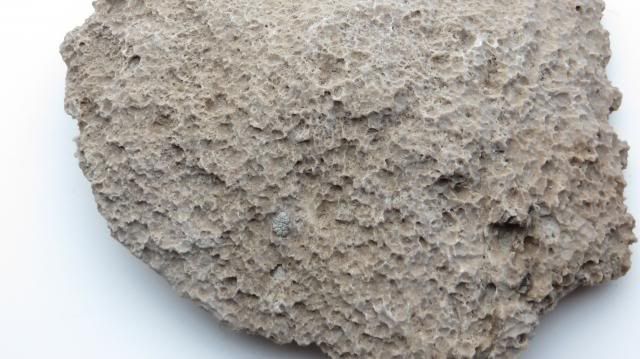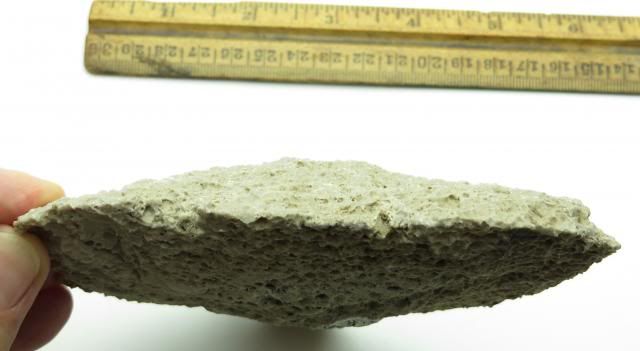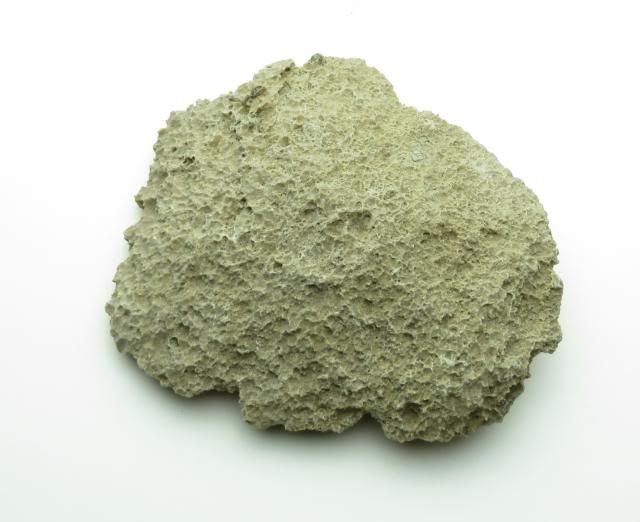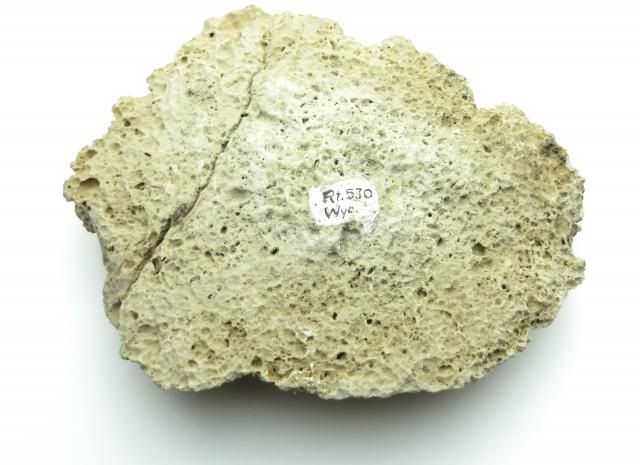|
|
Post by Pat on Jul 16, 2013 14:02:55 GMT -5
What is this? It's hard. Looks like dried and popped bubbles on the surface. Itching to cut in half. Below is a photo of the windowed area.   Could this be volcanic? Could this be volcanic?
 
[/URL The label says RT. 530 Wyo. I see there is a Route 530 in Wyoming. Is it a fossil? If not, what? Thanks. |
|
|
|
Post by jakesrocks on Jul 16, 2013 15:45:13 GMT -5
Resembles some specimens of Tufa that I have seen. I doubt that you'll find anything better inside if you cut it, but as is it will make an interesting specimen. The only other thing that comes to mind would be some form of fossil sponge. Again a better specimen, than cutting material.
|
|
|
|
Post by vegasjames on Jul 16, 2013 17:31:29 GMT -5
Is it really light, medium or heavy? Have you tried putting a drop of acid on it to see if it reacts? It could be a piece of caliche or calcium carbonate that are weathered. I find those all the time out here in the desert with that kind of texture.
|
|
|
|
Post by Pat on Jul 16, 2013 19:35:42 GMT -5
James, it is 15.4 ounces. Feels heavy for its size.
|
|
|
|
Post by vegasjames on Jul 16, 2013 19:38:01 GMT -5
Would not be tufa then. I still think it is some type of calcium rock. Try some acid on it.
|
|
|
|
Post by Pat on Jul 16, 2013 19:38:48 GMT -5
5%. Apple cider vinegar didn't affect it. No bubbles. Nothing.
|
|
|
|
Post by jakesrocks on Jul 16, 2013 20:18:12 GMT -5
|
|
Fossilman
Cave Dweller 
Member since January 2009
Posts: 20,718 
|
Post by Fossilman on Jul 17, 2013 11:13:19 GMT -5
Looks like coral or sponge.............If its calcite,it will break easily..Try chipping a small area to see...Cool piece by the way..
|
|
|
|
Post by Pat on Jul 17, 2013 12:11:39 GMT -5
Close ups added. Could it be volcanic?
|
|
|
|
Post by jakesrocks on Jul 17, 2013 12:25:10 GMT -5
Yup, coral. looking at the second closeup, almost dead center in the pic you can barely make out growth lines from a second type of coral which had attached itself to the larger piece. It's quite common in the fossil corals to find the larger and older piece at least partially overgrown with one or more different types of coral. Depending on where it was originally found, (surface find, or dug from sub surface), there's a good chance that many of the younger corals have been eroded away.
|
|
|
|
Post by Pat on Jul 17, 2013 12:33:35 GMT -5
If I windowed it, would it be just more of the same? The photos and specimens of corals I have seen (limited experience here) have a smaller shape within a shape. This does not.
|
|
|
|
Post by jakesrocks on Jul 17, 2013 12:40:39 GMT -5
If you are going to use it as a display specimen, you could always try a small window on the bottom first. You may or may not have the inner structures of the original critter. It all depends on the conditions when it was fossilized. There is a fair to good chance that you'll find those structures, depending on how deep you want to grind, and how much you want to alter a nice specimen.
|
|
Deleted
Deleted Member
Member since January 1970
Posts: 0
|
Post by Deleted on Jul 17, 2013 15:46:14 GMT -5
will a pocket knife scratch it?
|
|
|
|
Post by Pat on Jul 18, 2013 23:42:13 GMT -5
Yes, a pocket knife scratches it.
I also windowed it a bit. Need to take macro photo of it, but I think I can make out little starbursts in it.
Will take a hammer to an edge tomorrow.
Thanks for all the suggestions.
|
|
|
|
Post by jakesrocks on Jul 18, 2013 23:51:39 GMT -5
If you can see the starbursts, it's coral. Since it's soft enough to scratch with a knife, it's a calcium replacement type. Too soft for cabbing, unless you want to try a specimen cab. If it were mine, I'd just polish a small window to show the cells, and leave it for a display piece.
|
|
|
|
Post by Pat on Jul 21, 2013 17:43:03 GMT -5
Fossilman, I was able to chip it with a small brass hammer; nicked my hammer. I should know better!
See the last posting for windowed area.
|
|